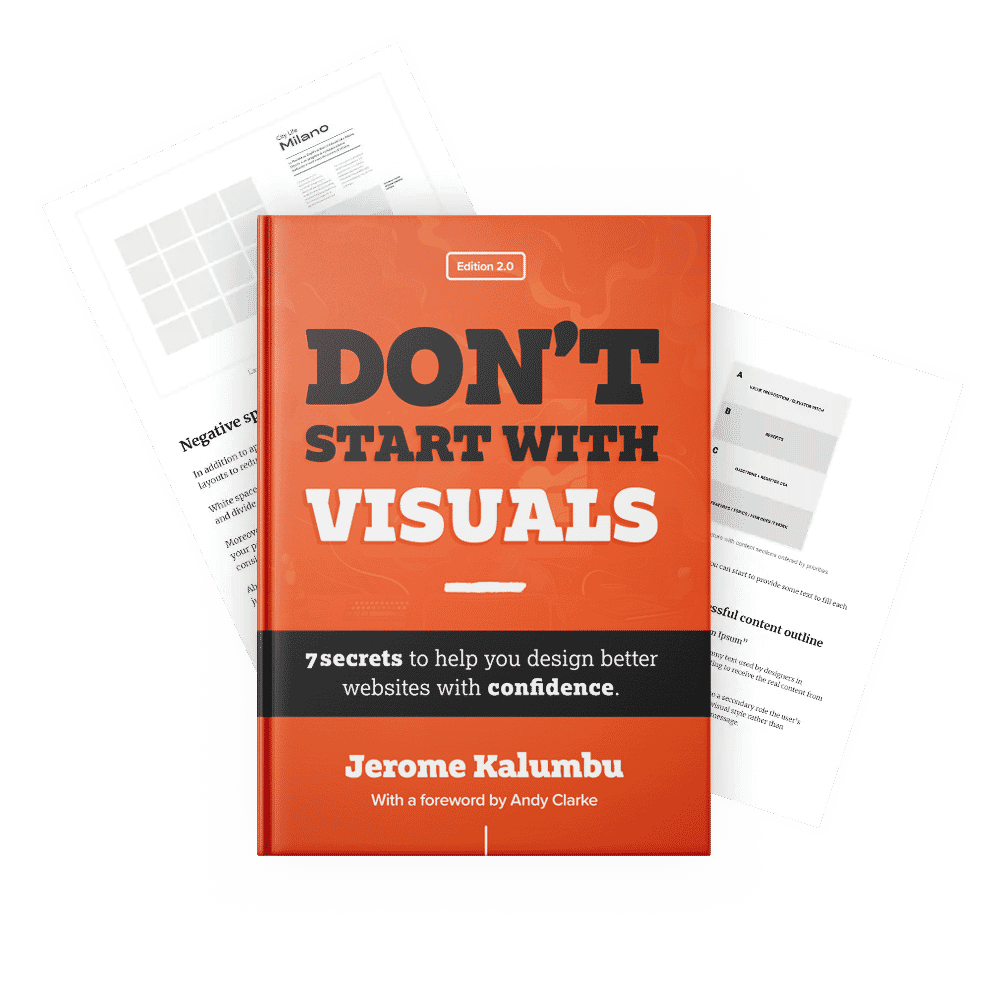Your website should help the user survive or thrive to avoid failure.
Quick summary If you want the user to listen what you have to say, you must tell him how do you help him survive or thrive. This article will explain to you simple ways to achieve that.

Designing an interface that drives your business goals requires time, effort and expertise.
The goal might be to sell products to increase your revenue, promote your business to build brand awareness, or attract new clients.
Whatever the goal of your page, If your content fails to justify why users should care about it, the interface will suck.
The Problem
I wrote this article because I am tired of seeing businesses and individuals promoting themselves instead of clearly explaining why users should care about what they offer on their corporate or portfolio sites.
This approach is wrong because these businesses don’t explain how their brand can help users overcome their challenges and frustrations.
In this article, I will explain tips to help you create interfaces that truly engage your users and drive your business goals.
The user is the hero of the story, not you (nor your business)
Users come to your site to overcome a problem or pain that prevents them from achieving a goal. For this reason, your site has to answer their burning questions to improve their lives.
For example, if you design a homepage, you must demonstrate why users should care about you if you want people to stay more than a few seconds on the site.
The best way to do this is to put the user at the centre of the story by asking yourself the following questions:
- Which problem do they have?
- What information do they need to know to take action?
- What do they want to achieve?
- What are their questions and objections?
- What are their needs?
Understand: Only listing your product or services on your site is noise because it doesn’t explicitly address your user’s primal needs.
So, to hook the users to your interface and eventually persuade them to act, you must clearly explain how the story you tell on the website will help them survive or thrive.
Address your users’ inner frustrations
Users will visit your site to complete their tasks and improve their lives.
But, to encourage users to engage with your site and solve their problems, you need to explain how your brand’s value proposition helps them defeat their internal problems.
In the book “Building a Story Brand (2017)”, Donald Milner defines these internal problems as evils or villains to defeat.
These internal problems are pains causing frustration, such as lack of time, confidence, skills, self-esteem and stress.
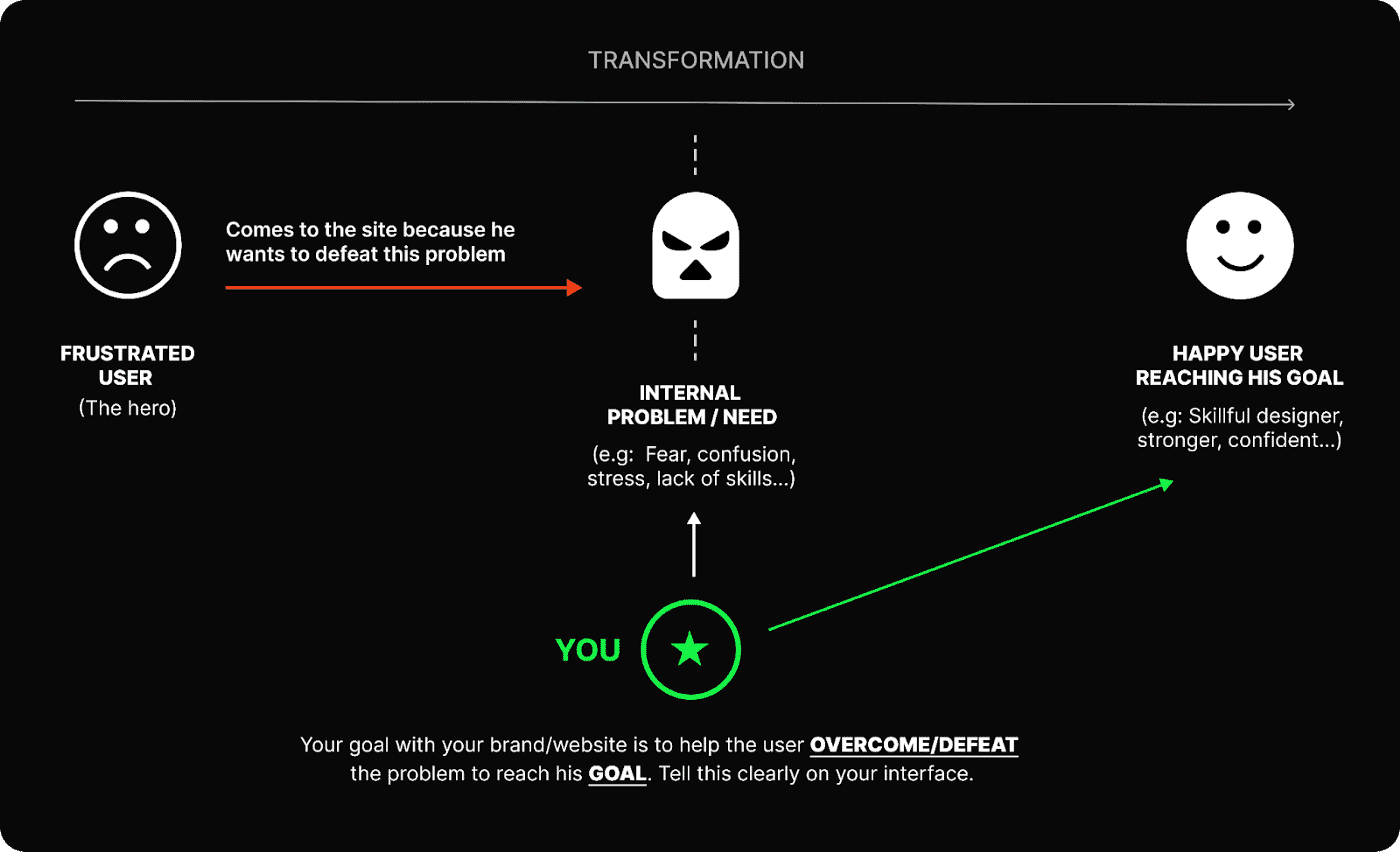
Let’s imagine you are a UX Designer.
Like most businesses, you might think that clients and recruiters will be interested in you only because you design beautiful digital products and have excellent UX Skills.
While these external problems will influence their decision, you must demonstrate the internal problems that your brand helps to solve.
This is critical because it’s the reason why clients and recruiters might pick you over the competition.
In a nutshell, external problems will sell much better when coupled with solutions to internal problems such as:
- Improve brand awareness
- Improve self-esteem;
- Improve network;
- Attract more customers;
- Become more powerful/skilful;
- Gain confidence;
- Gain freedom;
- Grow revenue.
Note that all these are examples of needs related to the survival of human beings.
In short, If these needs are addressed on your site, your message will resonate with your users, and your interfaces will be more effective.
Maslow’s pyramid hierarchy of needs
In 1943, Abraham Maslow established a hierarchy of human needs, arranging them according to their importance to our survival.
To engage with your users at a deeper level, you can use Maslow’s pyramid hierarchy of needs as a blueprint to illustrate how your site and brand will help them survive or thrive.
Remember, if you focus solely on your services and features without speaking about the internal needs that you solve, all you will do is noise — people won’t bother listening to what you are saying.
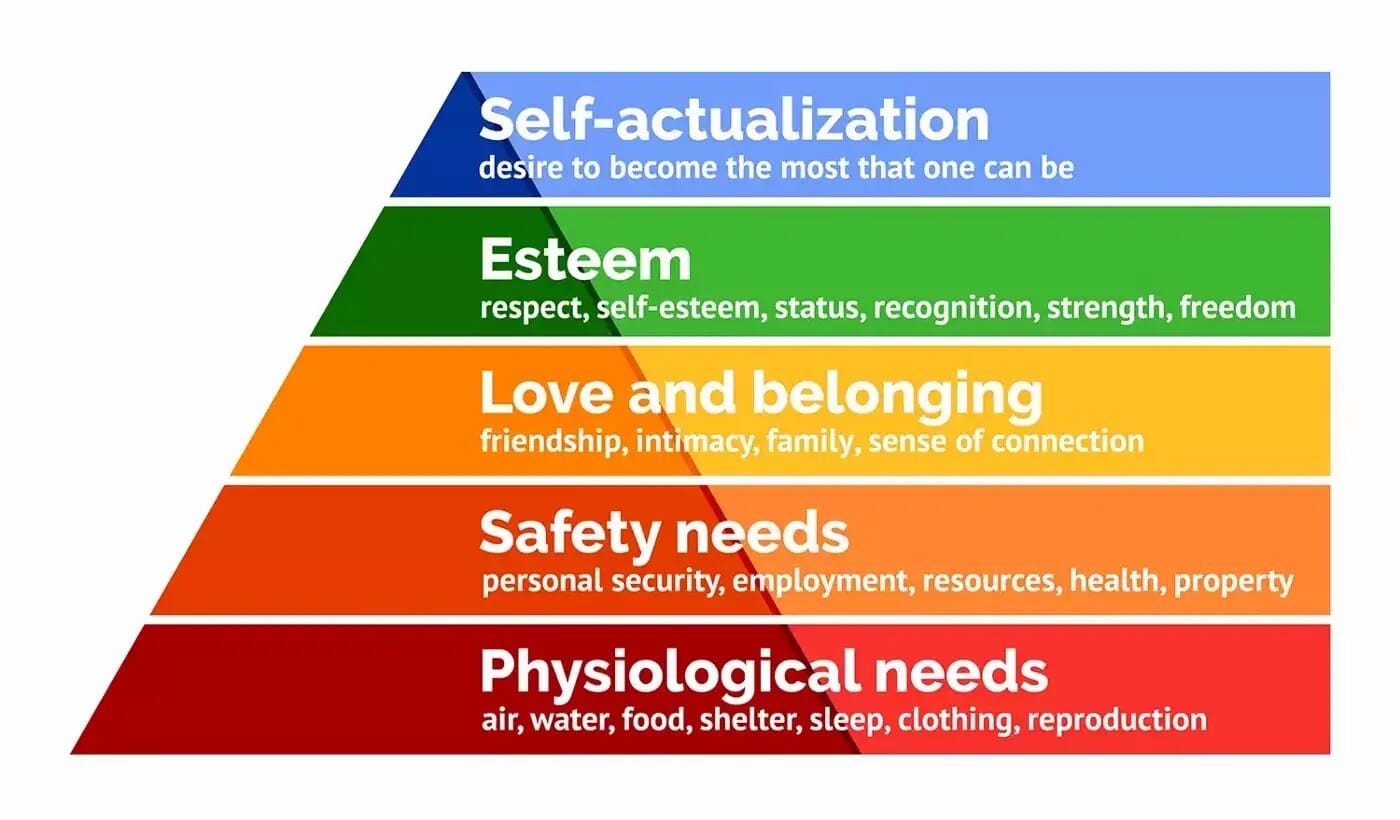
Dos and don’ts
My portfolio back in 2016 (Don’t)
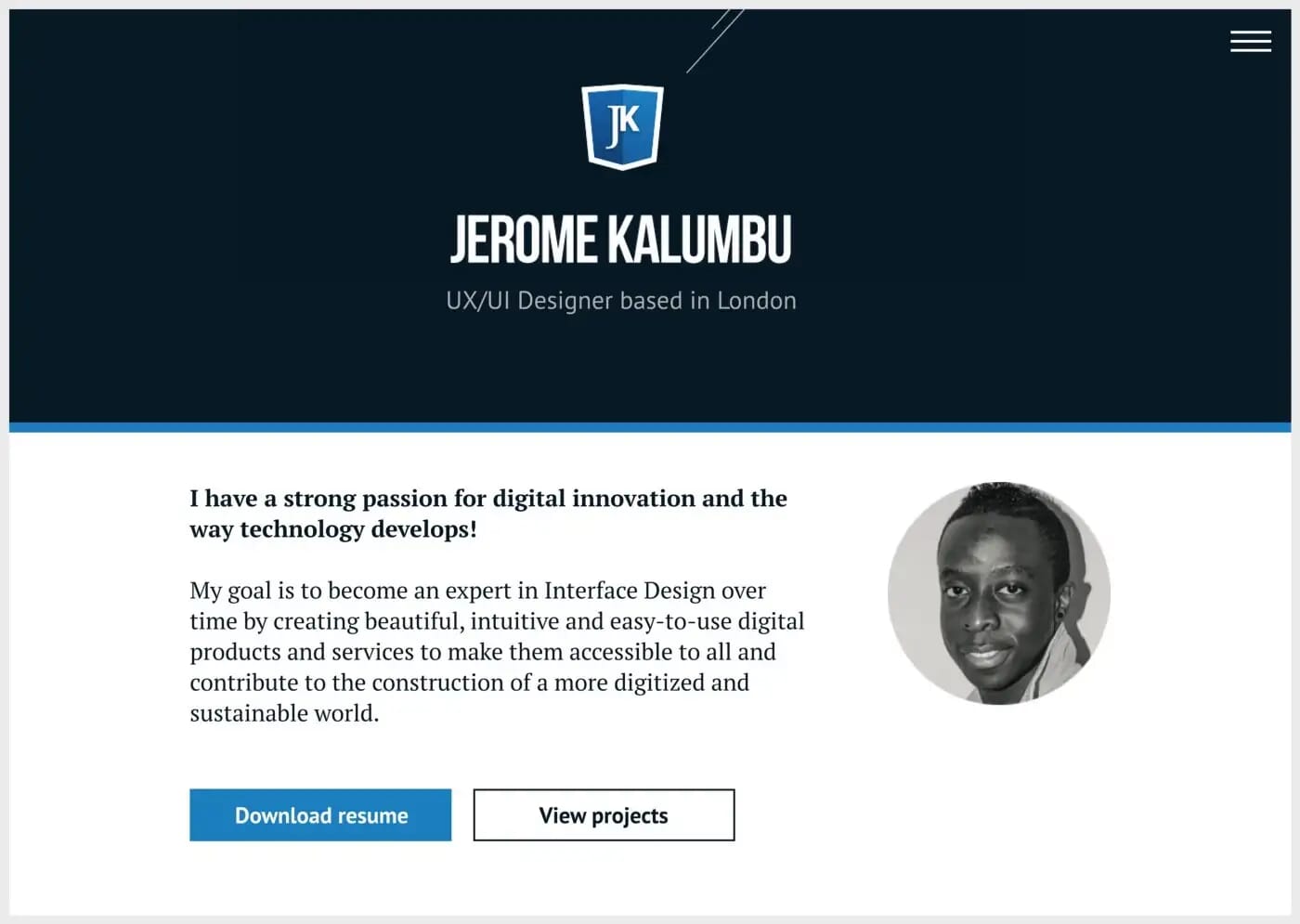
Above is a screenshot of the homepage of my portfolio back in 2016.
This interface was tragic because I focused exclusively on my story and the technical problem I solved. In addition, I forgot to explain how I helped my audience survive or thrive — I didn’t give them a reason to care about the story I told.
As a result, my portfolio’s homepage failed to convert.
Don’t do this for any page you design.
My portfolio in 2021
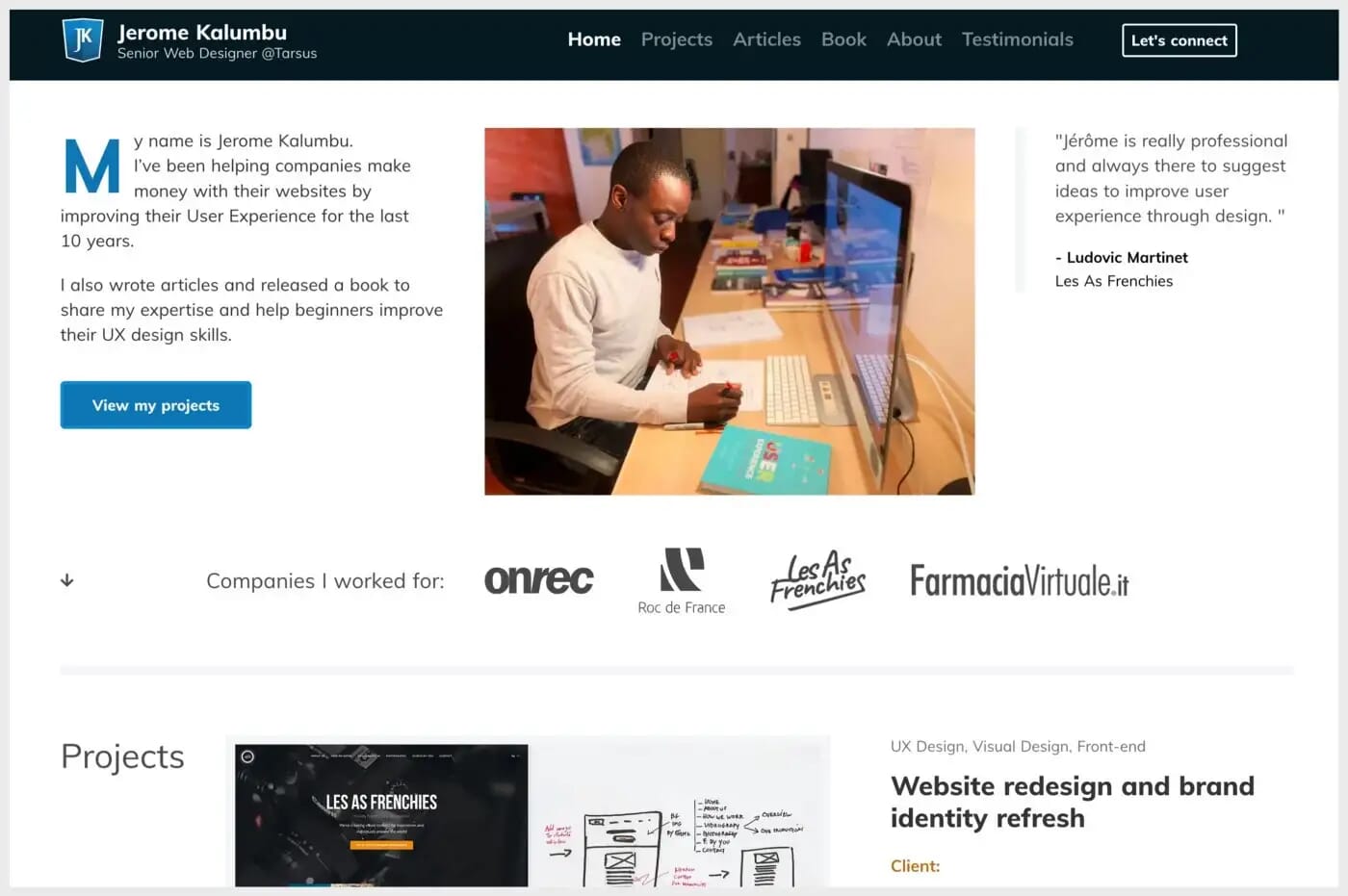
However, if you take the homepage of my website today and look at the copy, I made sure to address the internal needs of my audience.
With the words “make money” or “improve their UX design skills”, I clearly state how my brand addresses the primal needs of my audience.
Since I implemented these changes, the interface has converted much better than the previous one.
Smashing magazine Workshop page (Do)
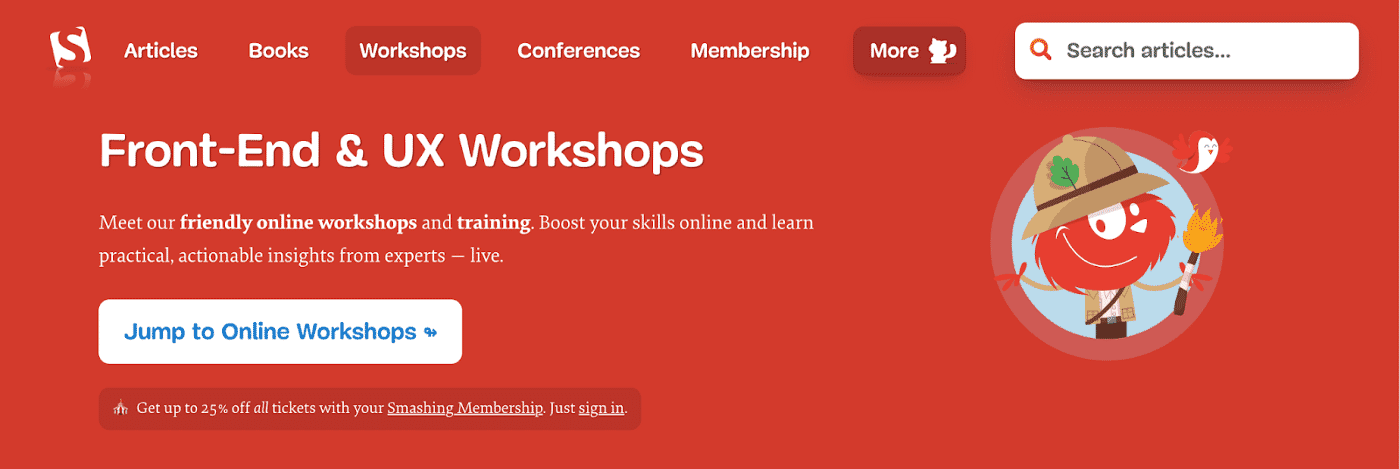
On this page of Smashing magazine — “Boost your skills” is a promise that targets people that are willing to improve their skills in Front-end and UX. Smashing magazine gives a valid reason for users to care about attending their workshops.
Conclusion
Human beings are biologically programmed by needs and desires such as survival, freedom, growth, social connections, and love.
As soon as our brain recognizes words or images that resonate with these needs, it will be hooked — this is how you can make users engage and interested in the story you are telling — and sell more.
Forget about speaking out loud about your features and services. Focus on justifying how your offering will help your users survive or thrive, and the success will be yours.
Thanks for reading!
Jerome
If you want to learn more about this topic, read my book “DON’T START WITH VISUALS”.
